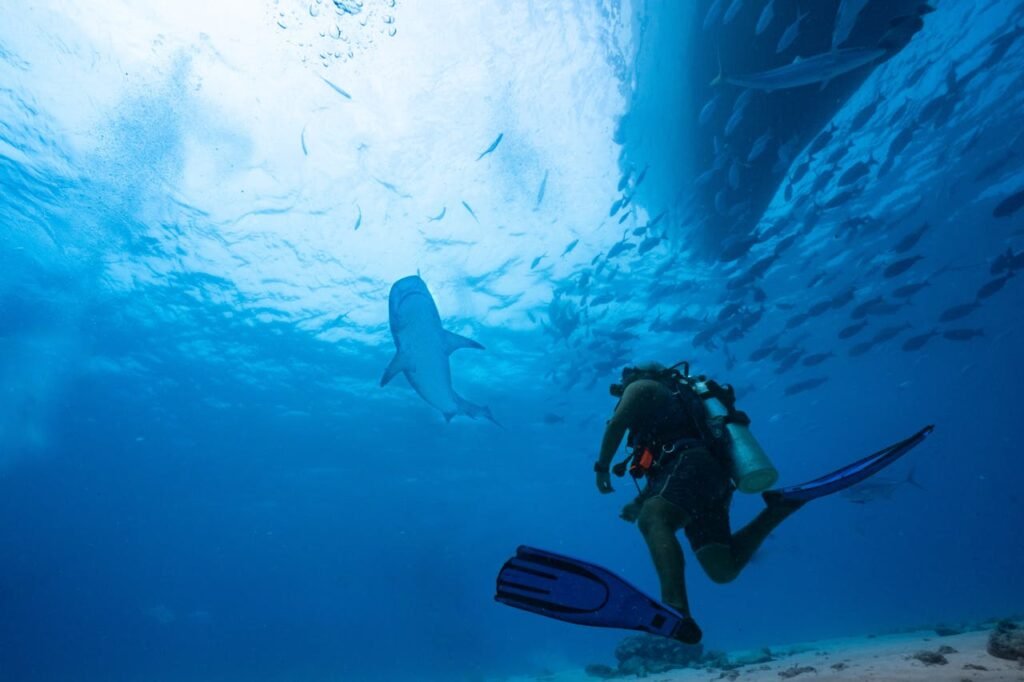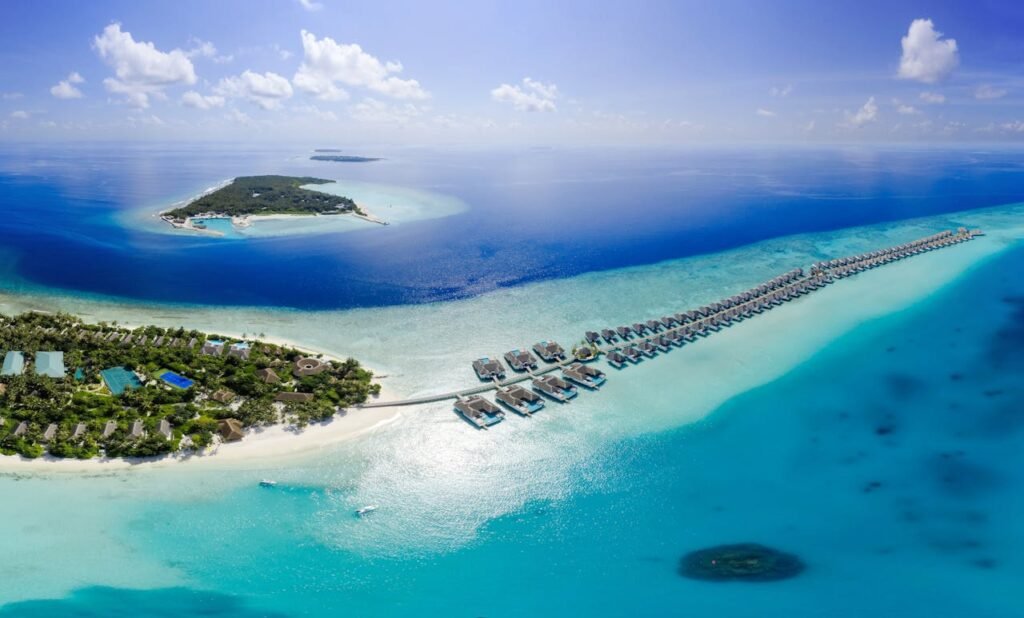A Guide to Scuba Diving in the Maldives: What You Need to Know
Published on January 30, 2025 by Nick Cordon

The Maldives, an archipelago of 26 atolls scattered across the Indian Ocean, is a world-renowned scuba diving destination. With its crystal-clear waters, abundant marine life, and stunning coral reefs, it offers a diver’s paradise that few places on Earth can rival. Whether you are a beginner looking to get certified or an experienced diver seeking thrilling underwater adventures, the Maldives has something for everyone. This guide will take you through everything you need to know before diving into the breathtaking waters of this tropical paradise.

Why Dive in the Maldives?
The Maldives is home to some of the most spectacular dive sites in the world. The sheer biodiversity and beauty of the underwater landscapes make it a must-visit location for divers. Here are some key reasons why you should consider scuba diving in the Maldives:
- Exceptional Visibility – The clear waters of the Maldives often provide visibility of 20 to 40 meters, making it easy to spot marine life and appreciate coral formations.
- Warm Waters – The water temperature in the Maldives typically ranges between 26°C to 30°C, making diving comfortable all year round.
- Diverse Marine Life – From colorful reef fish to majestic manta rays, whale sharks, and hammerhead sharks, the Maldives offers encounters with a wide variety of marine species.
- Unique Dive Sites – Whether you prefer coral gardens, drift dives, deep wrecks, or thrilling channels, the Maldives has a range of dive sites catering to different experience levels.
- Great for All Levels – With calm lagoons for beginners and strong currents for advanced divers, the Maldives accommodates divers of all skill levels.
Best Time to Dive in the Maldives
Diving in the Maldives is possible all year round, but different seasons offer unique experiences.
- Dry Season (November to April) – This is considered the best time for diving, with calm seas, excellent visibility, and higher chances of spotting manta rays and whale sharks.
- Wet Season (May to October) – While this season brings more rain and rougher seas, it is still a good time for diving. The increased plankton attracts large filter feeders like manta rays.
- Peak Manta Ray and Whale Shark Sightings – Manta rays are more frequently seen at cleaning stations between May and November, while whale sharks can be spotted year-round in South Ari Atoll.
Must-Visit Dive Sites in the Maldives
The Maldives boasts an array of dive sites, each with its own unique appeal. Here are some of the most famous ones:
- Maaya Thila (North Ari Atoll) – One of the top dive sites in the Maldives, this underwater pinnacle is home to reef sharks, turtles, and vibrant coral formations.
- Manta Point (North Male Atoll) – A hotspot for manta rays, where divers can witness these graceful creatures visiting cleaning stations.
- Kandooma Thila (South Male Atoll) – A thrilling drift dive featuring impressive coral formations and schools of big fish like barracudas and snappers.
- Fish Head (North Ari Atoll) – Also known as Shark Point, this dive site offers incredible shark encounters, making it a must for big fish lovers.
- Fotteyo Kandu (Vaavu Atoll) – A stunning channel dive known for dramatic overhangs, soft coral gardens, and schools of pelagic fish.
- Alimatha Jetty (Vaavu Atoll) – A night dive site famous for its nurse shark congregation, where divers can observe dozens of these gentle giants up close.
- Hulhule House Reef (Male Atoll) – A great site for wreck diving enthusiasts, with a sunken ship that has become an artificial reef teeming with marine life.
Types of Diving in the Maldives
Depending on your certification level and interests, you can choose from different types of diving experiences in the Maldives:
- Drift Diving – The Maldives is known for strong ocean currents, making drift diving an exhilarating experience. Divers ride the currents while observing marine life.
- Channel Diving – Many dive sites in the Maldives feature channels where the ocean meets the atoll, attracting large pelagic species.
- Cave and Overhang Diving – Some dive sites have fascinating caves, tunnels, and overhangs adorned with soft corals and sponges.
- Wreck Diving – There are a few notable wreck sites in the Maldives, such as the Victory Wreck near Male.
- Night Diving – The Maldives offers incredible night diving experiences, where divers can see bioluminescent plankton, hunting sharks, and other nocturnal creatures.
What to Pack for Scuba Diving in the Maldives
When preparing for a dive trip to the Maldives, it’s important to pack the right gear. While many dive shops offer rental equipment, experienced divers may prefer to bring their own. Here’s a checklist of essential items:
- Dive Certification Card – Required for renting equipment and joining dive trips.
- Dive Computer – Essential for monitoring dive depth, time, and nitrogen levels.
- Mask and Snorkel – A well-fitting mask enhances visibility and comfort.
- Wetsuit – A 3mm shorty or full wetsuit is recommended depending on your comfort level.
- Fins – Good-quality fins improve efficiency in strong currents.
- Underwater Camera – Capture stunning marine life and coral formations.
- Reef-Safe Sunscreen – Protects your skin while minimizing environmental impact.
- Logbook – Keeps track of your dives and marine encounters.
Getting Certified in the Maldives
If you’re not yet a certified diver, the Maldives is an excellent place to learn. Many resorts and dive centers offer PADI, SSI, and other internationally recognized courses. Beginners can start with:
- PADI Open Water Diver Course – The most popular entry-level certification.
- Scuba Diver Course – A shorter certification for those with limited time.
- Advanced Open Water Course – Perfect for divers looking to expand their skills and explore deeper sites.
For experienced divers, technical diving courses and specialty certifications like Nitrox, Deep Diver, and Wreck Diver are available.
Safety Tips for Diving in the Maldives
Scuba diving in the Maldives is generally safe, but it’s important to follow best practices to ensure an enjoyable and incident-free experience.
- Always Dive with a Buddy – Never dive alone, especially in strong currents.
- Check Your Equipment – Inspect all gear before every dive to prevent malfunctions.
- Be Aware of Currents – Some dive sites have strong currents, so proper training and awareness are essential.
- Respect Marine Life – Do not touch or disturb corals and sea creatures.
- Stay Hydrated – Dehydration can increase the risk of decompression sickness.
- Follow No-Decompression Limits – Stick to safe diving profiles to avoid the need for emergency decompression.
Conclusion
Scuba diving in the Maldives offers an unforgettable underwater experience, with its diverse marine life, crystal-clear waters, and breathtaking dive sites. Whether you’re a novice diver eager to get certified or a seasoned diver looking for adrenaline-pumping drift dives, the Maldives caters to all levels. Planning your trip during the right season, packing the right gear, and following safety protocols will ensure a smooth and enjoyable dive adventure. From swimming with manta rays and whale sharks to exploring vibrant coral gardens, the Maldives is a dream destination for anyone passionate about the underwater world.
Read also about diving in Mexico as another related diving locations.
FAQs
Is Maldives good for scuba diving?
Yes, the Maldives is one of the best scuba diving destinations in the world, offering warm waters, incredible visibility, and diverse marine life. With its vast array of coral reefs, atoll formations, and marine protected areas, divers can encounter manta rays, whale sharks, reef sharks, turtles, and vibrant fish species. The unique underwater topography, including channels, overhangs, and drift dives, makes it suitable for all experience levels, from beginners to advanced divers. Whether you prefer relaxing reef dives or thrilling pelagic encounters, the Maldives provides an unforgettable underwater experience year-round.
How much does scuba diving cost in the Maldives?
Scuba diving in the Maldives varies in cost depending on the dive center, resort, and whether you opt for a single dive or a package. On average, a single dive costs between $60 to $100, including boat fees and equipment rental. Dive packages are more economical, with a 5-dive package ranging from $300 to $500. Liveaboard diving trips, which allow divers to explore multiple atolls, start at around $1,500 for a week. Additional costs may apply for specialty dives, private guides, or Nitrox fills, but many resorts offer all-inclusive dive packages for convenience.
Can beginners dive in Maldives?
Yes, the Maldives is an excellent destination for beginner divers, offering calm lagoons, shallow reefs, and professional dive centers providing training. Many resorts and dive shops offer PADI Open Water Diver courses, allowing beginners to earn their certification in just a few days. House reefs near resorts provide ideal conditions for first-time divers, with little to no current and easy access to vibrant marine life. Even uncertified visitors can try Discover Scuba Diving (DSD) programs, which include a short training session followed by a guided dive with an instructor.
Which island is best for diving in the Maldives?
Several islands in the Maldives are renowned for their exceptional diving opportunities. Ari Atoll is one of the top choices, known for its high chances of spotting whale sharks and manta rays. Baa Atoll, home to Hanifaru Bay, is famous for seasonal manta ray aggregations. Vaavu Atoll is great for adrenaline-seeking divers, offering thrilling channel dives and night dives with nurse sharks at Alimatha Jetty. South Male Atoll features strong currents and pelagic encounters, while North Male Atoll is perfect for accessible yet diverse dive sites near the capital.
What is the best time for diving in the Maldives?
The best time for diving in the Maldives is during the dry season from November to April, when the seas are calm, visibility is at its peak, and marine life is abundant. This period offers excellent conditions for drift diving and spotting big pelagic species. However, the wet season from May to October is also a great time, particularly for manta rays and whale sharks, as plankton-rich waters attract them in large numbers. While occasional rain and rougher seas may occur, diving remains possible year-round.
Do you need a wetsuit for diving in the Maldives?
While the water temperature in the Maldives remains warm throughout the year, ranging from 26°C to 30°C (79°F to 86°F), wearing a wetsuit is recommended for thermal protection. Most divers opt for a 3mm shorty or full wetsuit to maintain comfort, especially during longer dives or multiple dives per day. A thin rash guard may suffice for shallow dives, but deeper or drift dives can lead to body heat loss, making a wetsuit beneficial. Divers prone to feeling cold may consider a 5mm wetsuit, particularly during extended liveaboard trips.
Are liveaboards or resort diving better in the Maldives?
Choosing between a liveaboard or resort diving in the Maldives depends on your diving preferences and travel style. Liveaboards are ideal for serious divers, allowing access to remote and diverse dive sites, multiple dives per day, and a chance to explore different atolls in one trip. They offer a cost-effective way to maximize diving but require full-time commitment. Resort diving, on the other hand, provides flexibility, comfort, and easy access to house reefs, making it perfect for beginners or those seeking a more relaxed vacation. Many resorts also offer daily boat dives to nearby dive sites.